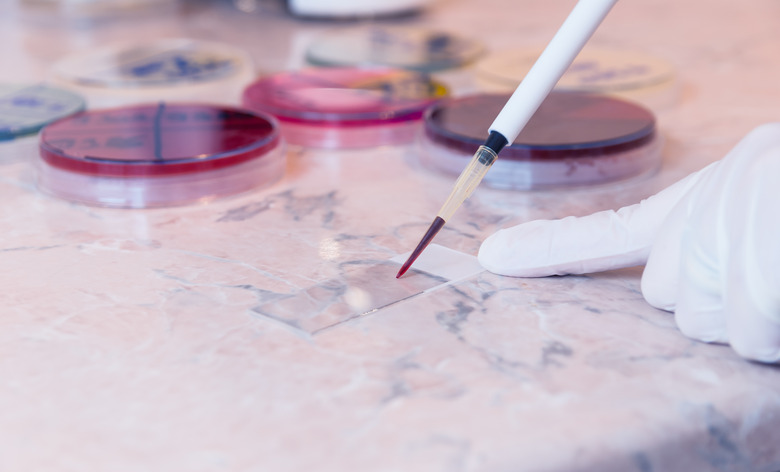Depolarization & Repolarization Of The Cell Membrane
Nerve cells at rest have an electrical charge across their membranes: the outside of the cell is positively charged and the inside of the cell is negatively charged. Depolarization occurs when the nerve cell reverses these charges; to change them back to an at-rest state, the neuron sends another electrical signal. The entire process occurs when the cell allows specific ions to flow into and out of the cell.
How Polarization Works
How Polarization Works
Polarization is the existence of opposite electrical charges on either side of a cell membrane. In brain cells, the inside is negatively charged and the outside is positively charged. At least three elements are needed to make this possible. First, the cell needs molecules such as salts and acids, which have electrical charges on them. Second, the cell needs a membrane that will not let electrically charged molecules freely pass through it. Such a membrane serves to separate charges. Third, the cells need to have protein pumps in the membrane that can move electrically charged molecules to one side, storing one type of molecule on this side and another type on the other side.
Becoming Polarized
Becoming Polarized
A cell becomes polarized by moving and storing different types of electrically-charged molecules on different sides of its membrane. An electrically charged molecule is called an ion. Neurons pump sodium ions out of themselves, while bringing potassium ions in. At rest – when the cell is not sending an electrical signal to other cells – a neuron has about 30 times more sodium ions on its outside than inside; the opposite applies to potassium ions. The inside of the cell also contains molecules called organic acids. These acids have negative charges on them, so they add to the negative charge inside the cell.
Depolarization and Action Potential
Depolarization and Action Potential
A neuron communicates with another neuron by sending an electrical signal to its fingertips, which causes the fingertips to release chemicals that stimulate a neighboring cell. Known as postsynaptic potential, this electrical signal and type of potential defines a graded depolarization of the membrane. If it is large enough, it will trigger an action potential. Action potentials happen when the neuron opens protein channels in its membrane. These channels allow sodium ions to flow from outside the cell into the cell. The sudden rush of sodium into the cell changes the electrical charge inside of the cell from negative to positive, which also changes the outside from positive to negative. The entire depolarization-to-repolarization event happens in about 2 milliseconds, allowing neurons to fire action potential in fast bursts permitting neuronal communication.
Repolarization Process
Repolarization Process
A new action potential cannot take place until the proper electrical charge across the neuron's membrane is restored. This means that the inside of the cell needs to be negative, while the outside needs to be positive. A cell restores this state, or repolarizes itself, by turning on a protein pump in its membrane. This pump is called the sodium-potassium pump. For every three sodium ions it pumps out of a cell, it pumps in two potassium ones. The pumps do this until the proper charge inside of a cell is reached.
References
Cite This Article
MLA
Ph.D., David H. Nguyen,. "Depolarization & Repolarization Of The Cell Membrane" sciencing.com, https://www.sciencing.com/depolarization-repolarization-cell-membrane-23800/. 11 July 2019.
APA
Ph.D., David H. Nguyen,. (2019, July 11). Depolarization & Repolarization Of The Cell Membrane. sciencing.com. Retrieved from https://www.sciencing.com/depolarization-repolarization-cell-membrane-23800/
Chicago
Ph.D., David H. Nguyen,. Depolarization & Repolarization Of The Cell Membrane last modified March 24, 2022. https://www.sciencing.com/depolarization-repolarization-cell-membrane-23800/
